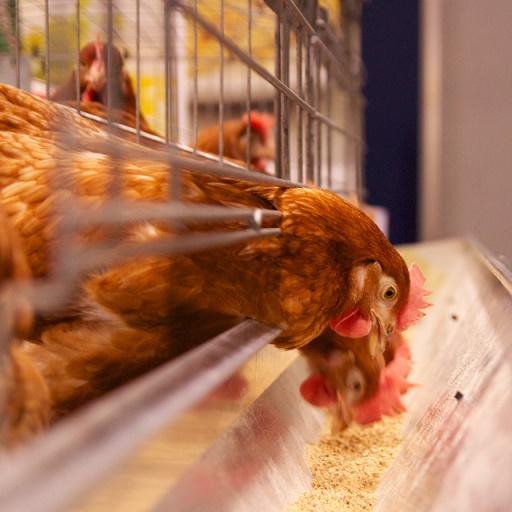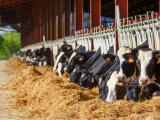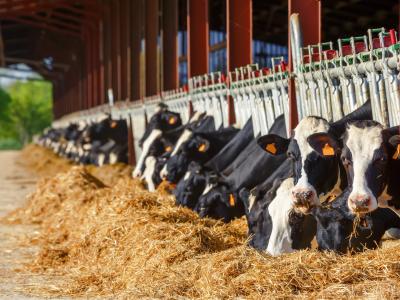Signaling the second recent detection of highly pathogenic H5N8 avian flu in the Middle East, Iran today reported two outbreaks at commercial layer farms, as European countries already experiencing outbreaks noted further spread of the virus.
As H5N8 spreads quickly, other countries are grappling with other avian flu strains, such as H5N6 in South Korea and Japan and H5N1 in Nigeria.
The new H5N8 clade, first found in Russian migratory birds in early June, has now turned up in 12 countries. The fast spread of the virus seems to underscore recent warnings from global health officials about likely spread by migratory birds. Iran's outbreak comes on the heels of an event reported by Israeli officials on Nov 13 involving a commercial farm.
Further Middle East incursion
Iran's agriculture ministry said today in a report to the World Organization for Animal Health (OIE) that the outbreaks hit two layer farms in Tehran province, located in the north central part of the country. The two facilities are both in the province's Malard County.
The outbreaks began on November 14 and were reported during passive surveillance. The H5N8 results were confirmed at Iran's Central Veterinary Laboratory.
Of 283,461 susceptible birds at the two farms, the virus killed 5,583, and the remaining ones were culled to curb the spread of the virus. Officials said an investigation into the source of the virus is under investigation and authorities have stepped up surveillance.
More spread in Europe
Meanwhile, countries in Europe, which has been the epicenter of recent virus activity, reported H5N8 at more locations.
Also, the UK Department for Environment, Food, and Rural Affairs (DEFRA) said on Nov 18 in its third assessment on the outbreak that as of Nov 11 there had been 8 outbreaks in poultry, 1 in captive birds, and 49 involving wild bird die-offs, with tufted ducks hit hardest, along with common pochards, gulls, and other species.
DEFRA noted that genetic analysis of an H5N8 isolate from Hungary suggests that the virus hasn't become more adapted to humans. In a related development, the European Centre for Disease Prevention and Control (ECDC) in a rapid risk assessment said the threat to humans is considered very low, but because the virus clusters with a clade that includes H5N1 and H5N6—both known to cause disease in humans (see related Flu Scan today)—infections in people can't be completely ruled out.
Denmark today reported three more H5N8 outbreaks, including the country's first in poultry. All of the latest outbreaks occurred in the eastern region, according to a report to the OIE by veterinary officials. The virus struck a backyard flock of chickens, ducks, geese, and turkeys, killing 11 of 69 birds. The outbreak began on Nov 19 and authorities finished culling the remaining birds today.
The country's two other latest detections involved two tufted ducks found dead on Nov 14 near the city of Faxe Ladeplads and three mute swans found dead on the same day in the town of Kalvehave.
Meanwhile, Poland's agriculture ministry on Nov 18 reported another H5N8 finding in five waterfowl in West Pomerania province, in the northwestern part of the country near the Baltic Sea, a region near where it and other countries have reported the virus in waterfowl. Officials reported the new detection in a Nov 18 report to the OIE.
Also on Nov 18 the Netherlands reported four more H5N8 outbreaks to the OIE that involvd dead gulls, teals, and tufted ducks. Two of the detections occurred in North Holland province in the country's northwest, while South Holland and North Brabant provinces in the south were also affected.
Croatia also reported its second outbreak, another involving mute swans, this time found dead on the Drava River near the city of Bijelo Brdo in the eastern part of the country, according to a Nov 18 report to the OIE.
Other avian flu developments
- Nigeria today reported one more highly pathogenic H5N1 outbreak, affecting a layer farm in Rivers state in the southern part of the country, according to a report to the OIE. The outbreak began on Nov 15, killing 54 of 800 birds. The remaining ones were destroyed to help control the virus.
- German health officials said today they will cull 8,800 geese on a farm in Schleswig-Holstein state after some were found to have a "low risk H5 bird flu," Reuters reported, citing the country's environment ministry. An additional outbreak is suspected in geese at another farm with the same owner, but it's not clear if it's the "low-risk" or the high-path H5N8 strain implicated in other recent European outbreaks.
- Japan's agriculture ministry today raised the country's avian flu alert level to 3 after the H5N6 virus was found in a fourth prefecture, Tottori, located in the southwestern part of the country, according to government statements translated and posted by Avian Flu Dairy. One of the reports said tests on a whooping crane found in Hokkaido prefecture were apparently positive for H6N2 avian flu.
See also:
Nov 21 OIE report on Iran outbreak
Nov 18 DEFRA update
Nov 18 ECDC H5N8 risk assessment
Nov 21 OIE report on further Danish outbreaks
Nov 18 OIE report on another Polish outbreak
Nov 18 OIE report on more Dutch outbreaks
Nov 18 OIE report on another Croatia outbreak





















